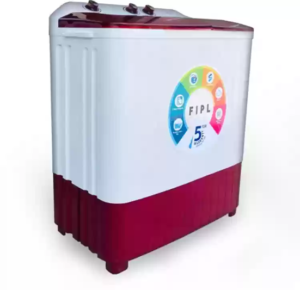Realizing ordinary roofing stating will engage you as a property holder to reach an informed decision about roofing companies Detroit that are extraordinary partners for your home’s style and the district in which you live. It will, in like manner, help you with understanding the concurrence with your roofing capability and the undertaking revives.
Some key roofing terms are recorded under:
Dark top: A waterproofing expert applied to roofing materials during collecting.
Dark top plastic roofing concrete: A dark top-based sealant used to bond roofing materials. He generally called blasting cement, roof tar, bull or mastic.
Back surfacing: Granular material is applied to the back of shingles to keep them from remaining during movement and limit.
Base bursting: That piece of the glinting associated with or laying on the deck to arrange water movement onto the housetop.
Created roof: Multiple layers of dark top and use sheets strengthened together.
Butt edge: The base edge of the shingle tabs.
Caulk: To fill a joint to prevent spills.
Close valley: The valley bursting is covered by shingles.
Covering: A layer of the thick dark top is applied to the outside roof surface to shield the housetop film.
Collar: Pre-outlined spine put over a vent line to seal the roof around the vent pipe opening. In like manner called a vent sleeve.
Secret nail technique: Application of roll roofing in which all nails are covered by a cemented, covering the course.
Counter blasting: That piece of the flashing joined to a vertical surface over the plane of the roof to hold water back from moving behind the base bursting.
Course: Row of shingles that can run equally, corner to corner or in a vertical heading.
Cricket: A peaked water diverter is presented at the back of a fireplace stack to thwart an assortment of snow and ice and divert water.
Deck: The top surface of which a roof system is applied, surface presented over the supporting framing people.
Twofold consideration: Asphalt roofing, whose lapped section is something like two inches greater than the revealed part, achieves two layers of roofing material over the deck.
Downspout: A line for discharging water out of roof channels to drain. Moreover called a trailblazer.
Stream edge: L-formed flickering is used along the rooftop and rakes to allow water run-off into the channels and to spill clear of fundamental events.
Eave: The piece of the housetop that shades or expands outward and isn’t straight over the external walls or the designs inside.
Revealed nail procedure: Application of roll roofing where nails collide with the covering course of roofing. Nails are introduced to the parts.
Belt: A wood trim board used to disguise the cut completions of the housetop’s rafters and sheathing.
Felt: Fibrous material used as an underlayment or sheathing paper depicts roll roofing materials.
Blasting: Pieces of metal or roll roofing used to shape water seals around vent pipes, stacks, interfacing walls, dormers and valleys.
Top: The completion of an external wall that comes to a three-sided point at the edge of a slanting housetop.
Granules: Ceramic-covered and ended crushed rock that is applied as the top surface of dark top roofing things.
Channel: The case that channels water from the rooftop to the downspouts. It was commonly annexed to the belt.
Head lap: A covering of shingles or roofing felt at their upper edge.
Hip: The overlay or vertical edge outlined by the intersection reason behind two slanting housetop planes. It runs from the edge to the shade.
Ice dam: Condition forming water back-up at the eave districts by the thawing out but again freezing of broken down snow on the shade. Can force water under shingles, causing spills.
Interlocking shingles: Individual shingles that exactly append to each other to give wind resistance.
Covered shingles: Strip shingles are made of two separate pieces overlaid to make extra thickness. Furthermore called three-layered and compositional shingles.
Lap: Surface where one shingle or roll covers with one during the application collaboration.
Mansard roof: An arrangement with a practically up roof plane related with a housetop plane of less slope at its zenith. Contains no pinnacles.
Mineral stabilizers: Finely ground limestone, record, traprock or other inactive materials added to dark top coatings for strength and extended assurance from fire and persevering.
Settling: A methodology for reroofing, presenting the second layer of new dark top shingles, where the top edge of the new shingle is slammed against the base edge of the ongoing shingle tab.
Pitch: The degree of housetop incline imparted as the extent of the climb, in feet, to the reach.
Low Slope: Roof pitches that are under 30 degrees.
Standard Slope: Roof contributes someplace the scope of 30 and 45 degrees.
Steep Slope – The roof contributes that are an overabundance of 45 degrees.
Bar: The supporting framing that makes up the roof structure; expeditiously under the deck; the housetop sheathing is nailed to the rafters.
Rake: The skewed edge of a slanted housetop over a wall from the eave to the edge. They can be close or extended.
Edge: The level external point molded by the intermingling of two inclining sides of a roof at the most raised sign of the housetop, hip or dormer.
Run: The level distance between the rooftop and a point directly under the edge; or a part of the reach.
Selvage: That piece of roll roofing is covered by the utilization of the housetop covering to get twofold consideration.
Sheathing: Exterior grade sheets used as a roof deck material.
Shed roof: A lone roof plane with practically no hips, edges, valleys or pinnacles, not related to certain different housetops.
Incline: The degree of housetop incline imparted as the extent of the climb, in inches, to the run, in feet.
Smooth-surfaced roofing: Roll roofing is gained with headway powder or mica instead of granules (covered).
Soffit: The finished underside of the rooftop that connects from the belt to the siding and hides the lower part of a shade.
Soil stack: A vent pipe that penetrates the housetop.
Length: The level partition starts with one shade and then onto the next.
Specialty overhang blasting film: A self-staying, waterproofing shingle underlayment expected to protect against water intrusion given ice dams or wind-driven deluge.
Starter strip: Asphalt roofing was applied at the shade as the chief course of shingles presented.
Tab: The atmospheric conditions uncovered the surface of strip shingles between the examples.
Communicating: Shingles presented over an unbalanced surface show mutilation.
Section – A mix of points of support, bars and ties, normally in three-sided units, to shape a design for help in wide-reach roof improvement.
UL name: Label displayed on packaging to show the level of fire and wind block of dark top roofing.
Underlayment: A layer of dark top-based moved materials presented under chief roofing material before shingles are acquainted, giving additional protection to the deck.





